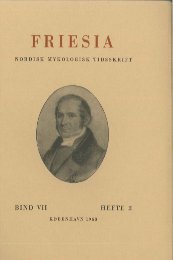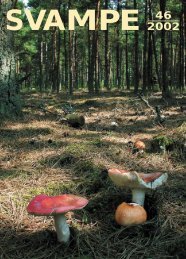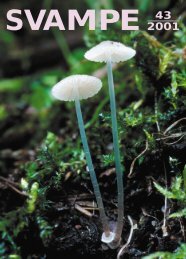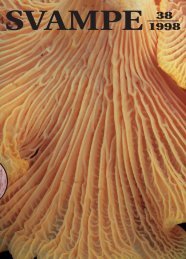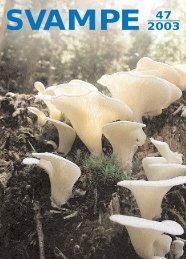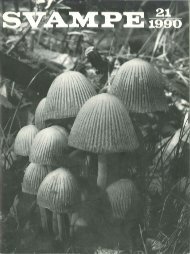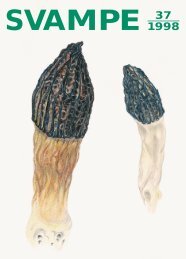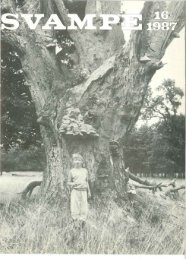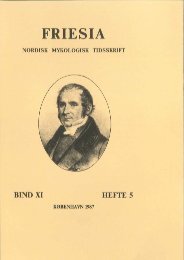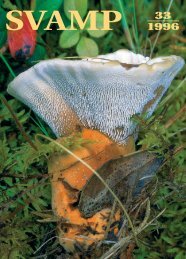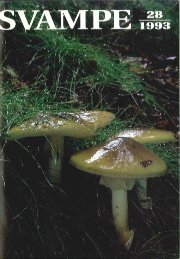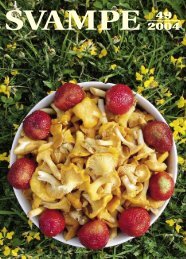Friesia X, 4-5
Friesia X, 4-5
Friesia X, 4-5
You also want an ePaper? Increase the reach of your titles
YUMPU automatically turns print PDFs into web optimized ePapers that Google loves.
- 246-<br />
on the Helgoland coast found only species which could be referred<br />
to group 1 a (with the exception of Corollospora cristata and C. maritima).<br />
In this area the considerable tidal movement could have inhibited<br />
the formation of fruit bodies on the surface of the substrate<br />
by fungi of the group 1 b and 2, or the substrate could have been<br />
too far away from the place of propagation of the group 2 (and 1 b)<br />
fungi (sensu KOHLMEYER 1966).<br />
The species in both groups must be considered as true marine<br />
fungi and t he difference in mode of fructification is for the time<br />
being the only character wh ich can explain the grouping in marine<br />
coast al forms and open sea forms.<br />
An important question is the fate of the large number of spores<br />
produced by fungi in zone 3 and to what extent the marine fungi are<br />
active in this zone. In order to study this aspect wood test blocks<br />
were buried in 1969 in varying depth from water's edge to the base<br />
of dune. After two years an attempt was made to find those blocks,<br />
but only those from the base of the dune were recovered. Test blocks<br />
buried just below the groundwater 'level were healthy. The test blocks<br />
from a depth of 25-40 cm were all brown-black and covered by brown<br />
mycelia which grew out into the sand. The wood blocks were strongly<br />
decayed by soft rot fungi to a depth of about 11j2 mm, waterlogged<br />
and could not float. On Pinus sylvestris were found: Carbosphaerella<br />
lepto sphariouies, Corollospora comaia, C. trijurcata, Lulworthia sp.<br />
and Remispora st ellata. On Fagus sylvatica: Carbosphaerella leptosph<br />
aeriouie s, Fungus im perfectus (Pho ma sp.). On Populus: Corollospora<br />
trifurcata. On Querq'us robur: Corollospora comaia, Fungus<br />
imperfect us (Moniliales) .<br />
It could thus be demonstrated that fungi from group 1 and 2 are<br />
able to infect wood buried in the sand in zone 3. But how the infection<br />
takes place is not known. A similar experiment with blocks placed<br />
on the surface of the sand was prohibited by the intense use of the<br />
beach for bathing during the summer.<br />
DISCUSSION<br />
There are no reports in Danish literature on the fungal flora of<br />
driftwood lying on the beach, and neither has the sand on the open<br />
North Sea coast been investigated for its contents of microfungi.<br />
Ecclogical investigations have not been carried out on the fate of the



